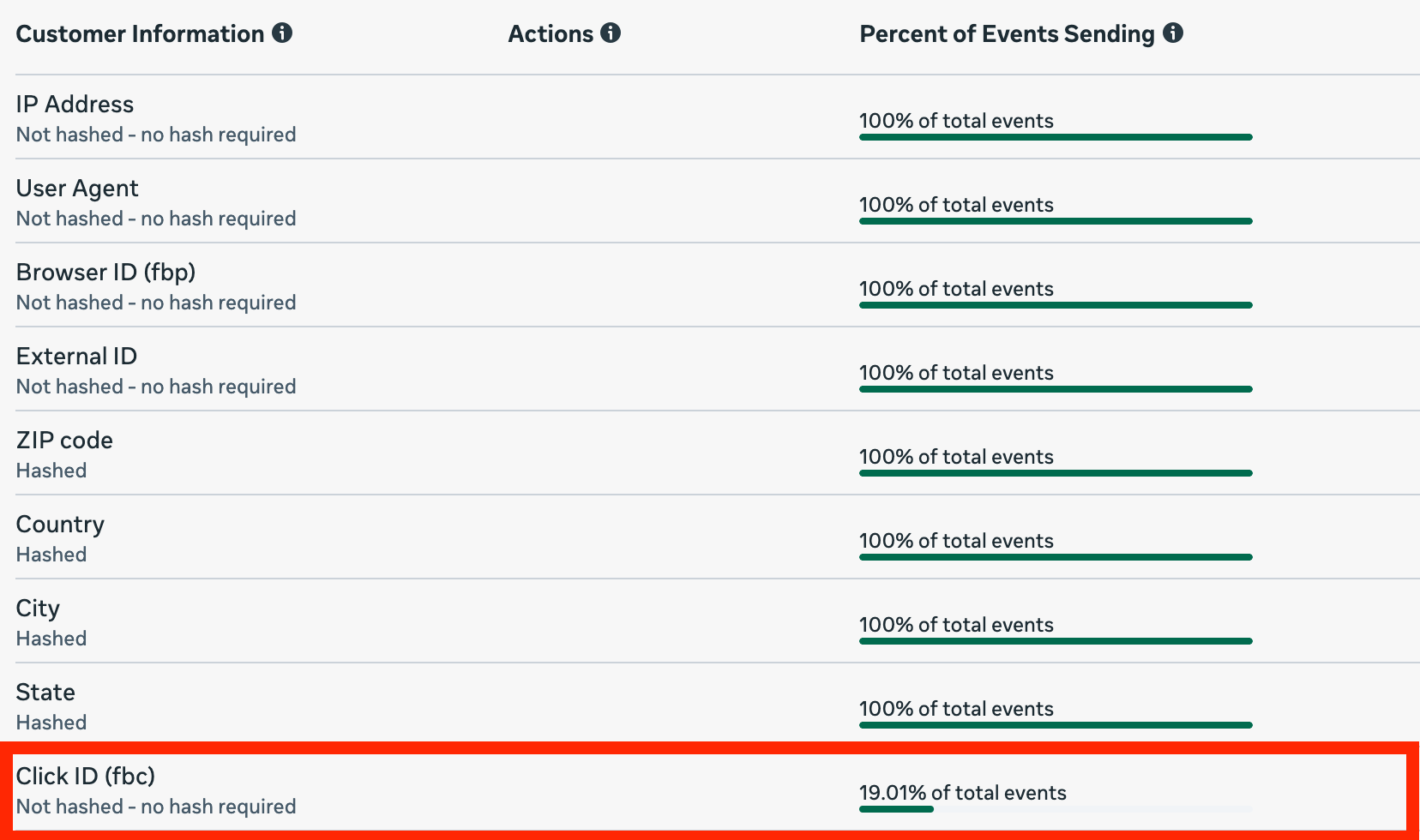Troubleshooting Common Meta Errors
Navigating Meta’s dashboard can sometimes surface confusing errors and warnings. This guide breaks down common alerts - from low EMQ scores and expired fbclid parameters to the impact of switching pixels - explaining what they mean and offering guidance about when you should take action.
Low EMQ score
Sometimes, you might see lower EMQ scores for top of the funnel events like View Content, Page Viewed, or even and Add To Cart.
This is common and happens because some parameters - like email, name, address - are not yet collected at that point in the user’s journey if, for example, the user is not logged in.
Top of funnel events like Page Viewed and View Content might be missing an EMQ score altogether, usually because of low traffic or if these events are sent only from the browser (pixel).
Expired fbclid warning in the Meta dashboard
You may occasionally see errors related to expired fbclid parameters. This is usually caused by click IDs older than 90 days, which are treated as expired.
This usually happens when the browser autocompletes a full URL it “remembered” long after the Facebook or Instagram ad click, or if users bookmark links or copy URLs containing expired or broken click IDs.
Since Meta doesn’t share exactly how click IDs are encoded, we send over everything that is captured, and expired or broken fbc values should be ignored on Meta’s side.
This will not cause any disruptions in your data and can be safely ignored, as the error usually goes away by itself.
What does the new Meta ad policy mean for health & wellness stores?
Recently, Meta has been tightening ad policies for health and wellness brands, including supplements, skincare, and fitness products. These restrictions can disrupt event tracking, ad performance, and attribution. If your business is categorised under this sector, you are subject to these changes.
This is part of Meta’s effort to avoid handling sensitive health data. This will affect metrics in your Meta dashboard - but having CAPI (server-side) tracking through Littledata means that the effect of these changes is significantly diminished.
Littledata’s server-side tracking and Meta CAPI integration bypass browser-based restrictions, ensuring accurate purchase tracking. Even if Meta throttles Pixel events, Littledata’s direct server-to-server connection keeps sales data flowing.
What is the alternative if your Meta dashboard is unreliable because of these changes?
GA4 is a good alternative to understand your marketing performance. Unlike Meta, GA4 isn’t subject to the same restrictions. Here’s how Littledata’s GA4 connection can help:
We track the entire customer journey - so you can analyze user behaviour across all your channels (not just Meta), providing a more holistic view of your data. Using data provided by our GA4 connection you can build custom reports to monitor key metrics like conversion rates and product performance.
Use Littledata’s enriched data to see how your marketing channels are performing, rather than relying on Meta alone.
FBC parameter missing for some events
This is likely to happen because the user did not click on a Meta Ad. The fbc parameter is specifically for sessions where a user clicked on a link from a Meta Ad. If they didn’t, this parameter won’t be set by default - so it’s expected for it to be missing for events that did not result from an ad click.
You can see a breakdown of an event's parameters if you go to your Meta dashboard and click on the score for any given event.

What happens when you switch to a new Pixel
Switching to a new Meta Pixel will most likely affect your ongoing campaigns’ performance. It will reset the learning phase for any campaign that relies on the pixel for optimization, because you are essentially starting from zero with a new data source.
Any campaign optimized for an event that was previously tracked by the old pixel will be forced back into the learning phase when you switch to a new pixel. During this new learning phase, performance is typically less stable, because the algorithm needs time and sufficient volume to find the right audience again.
If you need to switch to a new pixel, we recommend doing this gradually by running the pixels in parallel for a while, and migrating campaigns one by one.